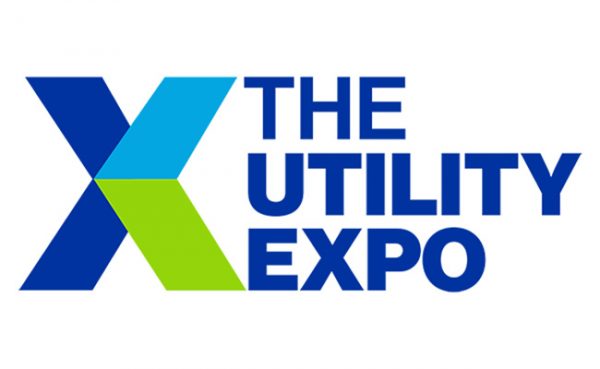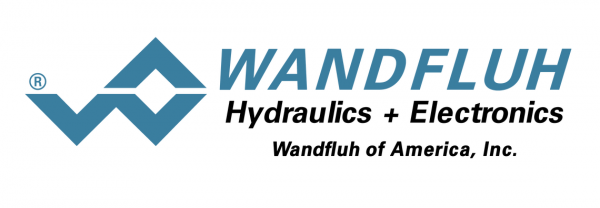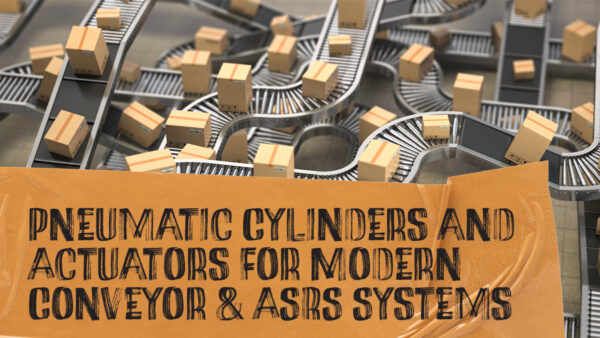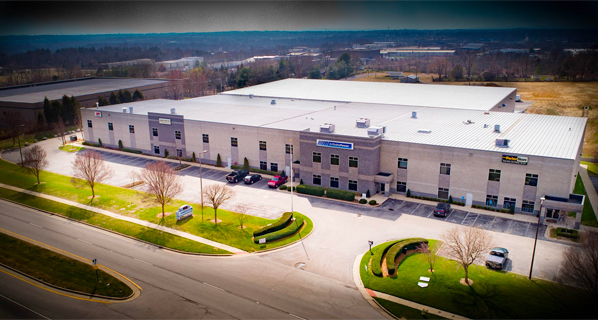Mike Terzo: The Age of Disruption
By Michael Terzo, CEO & CTO, Terzo Power Systems.
 Although I founded a startup called Terzo Power Systems to improve the efficiency of hydraulic systems, I learned over the last few years that I’m not in the business I thought I was. It was natural to assume I was in the fluid power industry: I’m a member of the National Fluid Power Association and the International Fluid Power Society. I know and appreciate many folks in the hydraulics and pneumatics world.
Although I founded a startup called Terzo Power Systems to improve the efficiency of hydraulic systems, I learned over the last few years that I’m not in the business I thought I was. It was natural to assume I was in the fluid power industry: I’m a member of the National Fluid Power Association and the International Fluid Power Society. I know and appreciate many folks in the hydraulics and pneumatics world.
Then it finally dawned on me a few years ago that I am not in the fluid power industry but rather the electrification industry. I came to this realization slowly over the last few years; a major shift in one’s thought process does not happen overnight. As I started working with companies and customers on their hydraulic needs, I began seeing new trends emerging and new challenges arising. The traditional approach to designing, purchasing components, and selling our product was not working – or at least I saw that it was not working at a speed that allowed us to keep up with what was going on in the industry. This is why I began telling people we were now in what I would call the age of electrification.
It’s important to make distinctions between different aspects of electrification. In the media we hear a lot about Tesla, Rivian, zero-emission vehicles, and other electric and autonomous cars. This is what the general public audience thinks of when they think of electrification. This market is specific to high-volume, mass-produced light-duty vehicles and is what I refer to as the traditional EV market. But most electrification is going on outside this high-profile sector.
The most significant impacts of electrification are not happening in the passenger automotive market. Instead, the most substantial, powerful, and wide-ranging technologies are being developed quietly, behind the scenes in so many different sectors of our world. Depending on which industry you’re in and which presentations, conferences, or trade shows you attend, it may be called the Internet of Things, Industry 4.0, AI, machine learning, SKYNET, or good old-fashioned automation.
When we look deeper, these technologies are unlocked and driven by the massive proliferation of powerful, cheap integrated circuits and other electronics. The age of electrification is much more complex than any one new idea or technology. The true impact of electrification is not that machines might become sentient or that cars might drive themselves. Rather, the true impact of electrification is the generational window of opportunity to completely disrupt and rewrite entire sectors of our economy.
When looking at this opportunity in the context of heavy-duty off-highway equipment (also called industrial vehicles), one can’t help but get excited at the opportunities that present themselves on a daily basis. I define this sector as mobile pieces of equipment in the construction, agriculture, mining, and general off-highway industries. The opportunities that we see emerging are certain to disrupt supply chains, manufacturing processes, market channels, maintenance and MRO requirements, and cost of ownership.
Maybe a better term is not the age of electrification but instead the age of disruption. If you have been to any trade conferences in recent years, this is no surprise. There are many professionals on the speaking circuit who discuss this at length from many different perspectives. While these presentations are fascinating, engaging, and interesting, they have always left me wanting. As a business owner, that takes the form of wanting to implement a successful solution to this disruption.
As an inescapably obsessive nerd, I’ve spent the last decade of my life digging through these opportunities to better understand all aspects of these developments and their solutions. That’s why I founded Terzo a decade ago and developed our Hydrapulse electrohydraulic technology. I want to help enable our customers to capitalize on this age of disruption. For years, I thought we were developing solutions for the fluid power industry, when in fact we were developing solutions for the age of disruption.
Market channel disruption
Let’s talk about one of the key emerging opportunities mentioned above: market channel disruption. For many entrepreneurs, the first step is learning how to raise money. At the beginning, you struggle to even understand who to talk to and what to say. Slowly, you learn (mostly through failure) how to move from one level to the next. Early on there was a common theme to the questions asked by potential investors. What is your pathway to the customer?
There’s a reason why investors ask this question in one form or another before they will invest.
They know that without a solid, executable path to the customer, the venture will most likely fail.
Young entrepreneurs often fail to understand the complexities and challenges of solving this issue. You can’t simply say, “We’re going through distributors,” “We’ll sell in Walmart,” or “We’ll build a website and customers will naturally find us.” These are hopes not plans.
Let’s return to our market channel for the off-highway industry. I’ve had numerous conversations with every type of stakeholder in the industry about this topic. If you talk to an industry veteran from one of the larger OEMs, they’ll typically tell you that there is no way around the power of the dealer – that the existing dealer networks are the dominant force in the path to market. They say there’s no way to do anything outside of that business model.
The other side of the conversation with industry innovators is that the dealer networks are archaic dinosaurs headed for extinction. They are convinced that their disruptive technology will be sold online and delivered to your door with the click of a mouse. While both of these views seem crazy to me, they are almost word-for-word conversations I have had in countless conferences, hotel bars, and trade-show booths. If history teaches us anything, it’s that humans are terrible at predicting the future.
I look at this opportunity of market disruption through the lens of the consumer first, and then I work back toward the factory. This becomes incredibly complex. You realize that you have to take into account virtually every aspect of modern life and consider the geopolitics of both where you manufacture and where you sell. You have to consider the current technology and anticipate the future at every point in the supply chain. That includes intrinsic and nebulous aspects such as relationships, entrenched thought processes, and the good old Ford-versus-Chevy mentalities out there. The overarching idea with this opportunity of market disruption is that virtually every stakeholder, from vendors to the customer, are more open than ever before to new ways of doing business. This was true before COVID and is certainly true in the postpandemic era.
Market disruption is an opportunity not just for OEMs but also for the middleman in the transaction. While Tesla has shown that dealers can be successfully cut out of the loop, that comes with significant risk. We saw that when revenue was threatened by the automotive dealership networks, they did not employ a free-market solution of providing a better product or service. Instead, they chose the proven and well-worn path of lobbying and influence peddling. While customer demand is the great equalizer, there is no doubt high risk (and high reward) to any alternative. Those who develop the business solutions to get the product in the customer’s hand in the most rapid, cost effective, and painless way usually come out on top.
The opportunity that Tesla exploited existed for one reason: electrification. Would Tesla’s business model of cutting out the dealer have succeeded without the electrification of the passenger vehicle? History is littered with dozens of companies that tried to disrupt the conventional automotive market prior to electrification. This example illustrates that the opportunity that electrification represents across industries has not been seen in generations. As we continue to explore the path to market disruptions in the off-highway industry, I want to talk about this opportunity from three distinctive points of view. For now, I’ll leave out the OEMs but I’ll return to them later. The three points of view are the suppliers (i.e., vendors), conduit providers, and end users or customers.
Suppliers
Every industry has unique aspects to their supplier network – from the most established, mature networks of Tier 1 suppliers of the big automotive industry to the fractured and obtuse supply chains of innumerable niche industries. Since we are talking about the off-highway industry, we’ll focus on the existing supply chain network that provides components to the OEMs who manufacture construction, agriculture, mining, and other heavy-duty mobile vehicles. This network matured long before I was born and consists of component manufacturers of all shapes and sizes. Yet they all share one thing in common: over time, they have been optimized to supply components for an internal-combustion driven engine.
They supply drivetrain components optimized for the delivery of diesel engine torque output to the means of propulsive power, such as tracks or wheels. Those components might also be optimized for the delivery of diesel engine torque to a hydraulic pump or other auxiliary work function. Components of the chassis or suspension are optimized to house a diesel engine and its peripheral parts. Components for body work or the cab have been optimized for a diesel engine and a human operator, and electrical components have been optimized for the 12 or 24 volts of electrical power typically required.
This means that for decades, as a supplier to this industry, every aspect of your business has been optimized around an internal combustion engine. Given the ICE focus, weight was never the most important issue, and your whole supply chain has been built around ferrous metals and alloys. You have a deep understanding of that material, including its cost, manufacturing processes, and handling structures. But now you have to change some components to aluminum to reduce weight, maintenance requirements, or numerous other issues related to electrification. Which means retraining and establishing new supplier networks, all of which involves a significant learning curve. And while you’re engaged in this process, you’ve created a window of opportunity for your competitors. In fact, some of your customers won’t be willing to wait for you to take the time to retool from steel to aluminum.
I’ve been told by some of the largest suppliers on the planet that, while they see electrification on the horizon, they don’t think it’s an issue to spend resources on today. If they are spending any resources on electrification, it’s within the context and the confines of their own network of friends, suppliers, and customers. To quote Paul Meyer, the motivational speaker and pioneer of the self-help industry, “If you continue to think the way you have always thought, you’ll continue to get what you’ve always got.”
Conduit providers
Any college business major can recite the components of a good business plan, which include a sales channel. This is a concise term describing how you reach your customer and tell them about your product. But you have to do more than tell them about your product, you have to sell it to them. They need to know how awesome your product is, how much they need your product, and why your company and product can solve all of their problems. Every industry has specific and unique sales channels, and this is vital for new companies to understand.
In the age of electrification (and disruption), there are now so many ways to interact with customers that you must find not just the conventional channels but perhaps invent new conduits to the customer. And therein lies the opportunity again. If you are already in the business of supplying services and components (distributors, integrators, engineering firms), then you can grab whole new chunks of the market that were not feasible before. But only if you act boldly. This means seeking out advice, information, and resources completely outside your comfort zone. It might mean listening to a young new hire who just graduated from college and is saying something that goes against what your older, seasoned sales folks are saying.
For example, do you know there is a new (as of 2022) online marketplace specifically for electrification components in mobility sectors? Are you selling, represented, or even aware of this marketplace? If not, you are missing an opportunity. The enormous opportunities are not just for existing distributors or companies but for whole new companies to emerge that are that conduit or provide the service of connecting sellers and buyers. The method by which you sell your widget to your customer in 2023 might not even be invented yet. Or it might already be there and you have yet to capitalize on it.
Here is a test for existing conduit providers to see if you might be missing an opportunity in this age of disruption: When was the last time you asked your marketing team what keywords your website was using? It’s a trick question. If you actually think Google cares about keywords anymore, then you are definitely missing an opportunity. Our machines may or may not become sentient and take over the planet, but search engines are already virtually human. How you market in today’s online world might mean the difference in whether you see declining revenue and blame it on Covid and inflation, or you see growth in whole new customer bases.
End users
The end user in our world is the customer who buys the machine from the OEM. Sometimes this is a machine operator, sometimes a farmer, or maybe it’s a rental fleet company. Regardless, the age of disruption brings some serious opportunities to this category. I’m going out on a limb in saying this, but traditionally, end users don’t have much say in directing the types of advancements incorporated into the vehicles they purchase. While many OEMs like to talk about the “voice of the customer,” that voice is rarely heard. Not because the OEMs won’t listen, but because there is little they can actually do since the technology of a diesel-powered machine provides limited design opportunities on this front.
Not so in the age of electrification. When we decouple the ICE and tread into the hybrid and electric architectures, a whole new world of design, performance, and function improvements opens up. The point is that the age of disruption addresses the full range of customer needs in the off-highway market and, once met, those needs become demands. The opportunity for customer-driven needs to be heard and implemented is like watching a newly released movie in the theater, shouting out the plot change you would like to see, and having it happen in real time. In other words, the end user directs the outcome.
If you’re an end user, warm up your brain and start thinking about what you would like to see on your next vehicle instead of just waiting for the next model to come out and complaining that it doesn’t do X or it would be great if it had Y. Tell the OEMs that you want X and Y. The OEMs never listened before because they didn’t have to. They could sit back and weigh the cost of implementing X or Y against the potential upside or downside impact to revenue. Now, if they don’t implement these changes, someone else will, and they’ll be able to do it quickly due to the inherent advantages of electrification.
The disruption has arrived
Ever heard of total cost of ownership? Well throw out what you have learned about diesel engine TCO and embrace an entirely new thought process around ownership. Not only might the new hybrid- or electric-based machine that customers buy in the near future be a completely different animal in terms of ownership costs, they may not even buy one. Maybe their next purchase will be based on productivity as a service, or some yet-to-be-developed cost-share model like Uber for tractors.
I left the OEMs out of this article for a specific reason. It’s not because I like beating up on the big guy; it’s because they already get the press and attention. When OEMs announce a new feature, it takes up all the oxygen in the room. But behind the scenes, these new features, platforms, and vehicles are enabled by a crazy amount of disruption happening every day. The opportunities that exist for the supplier, the vendor, the customers, the machine shop, and the workers are what is truly exciting about this age of electrification disruption!








